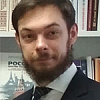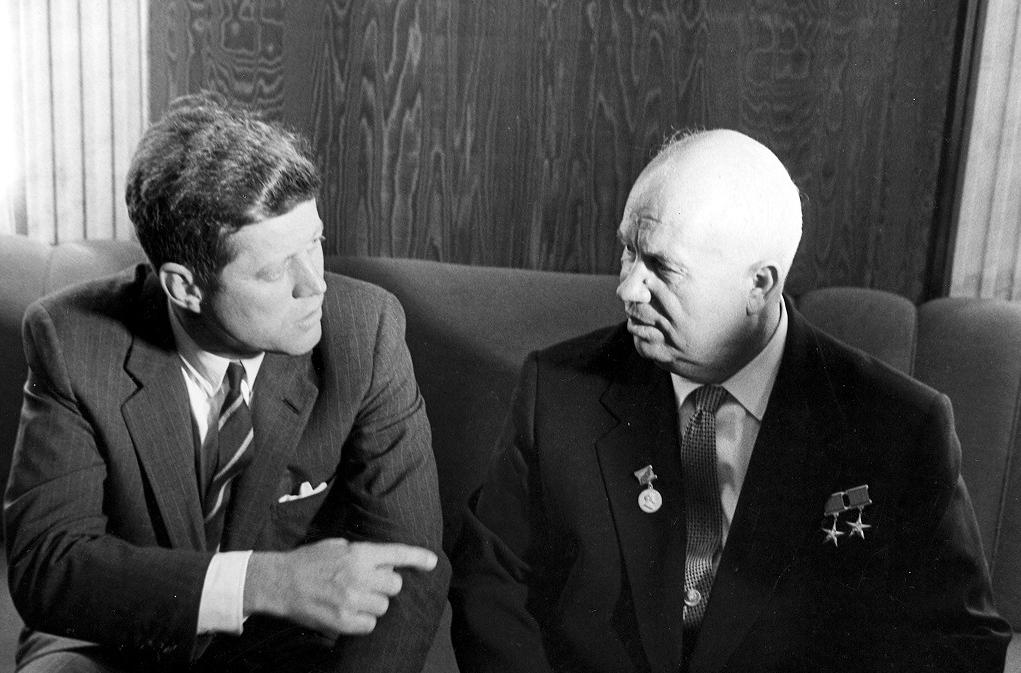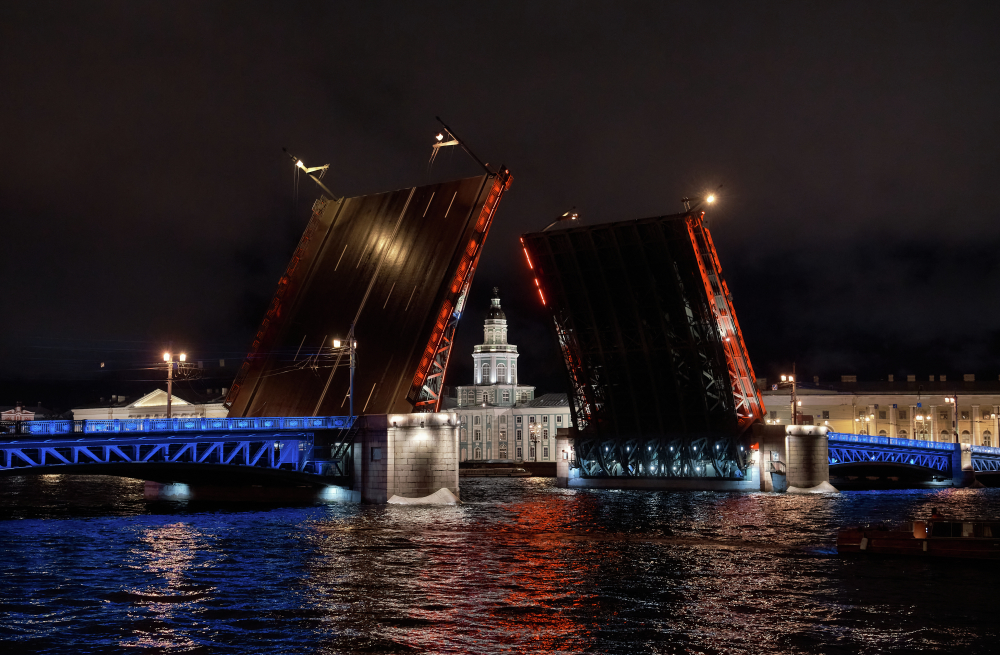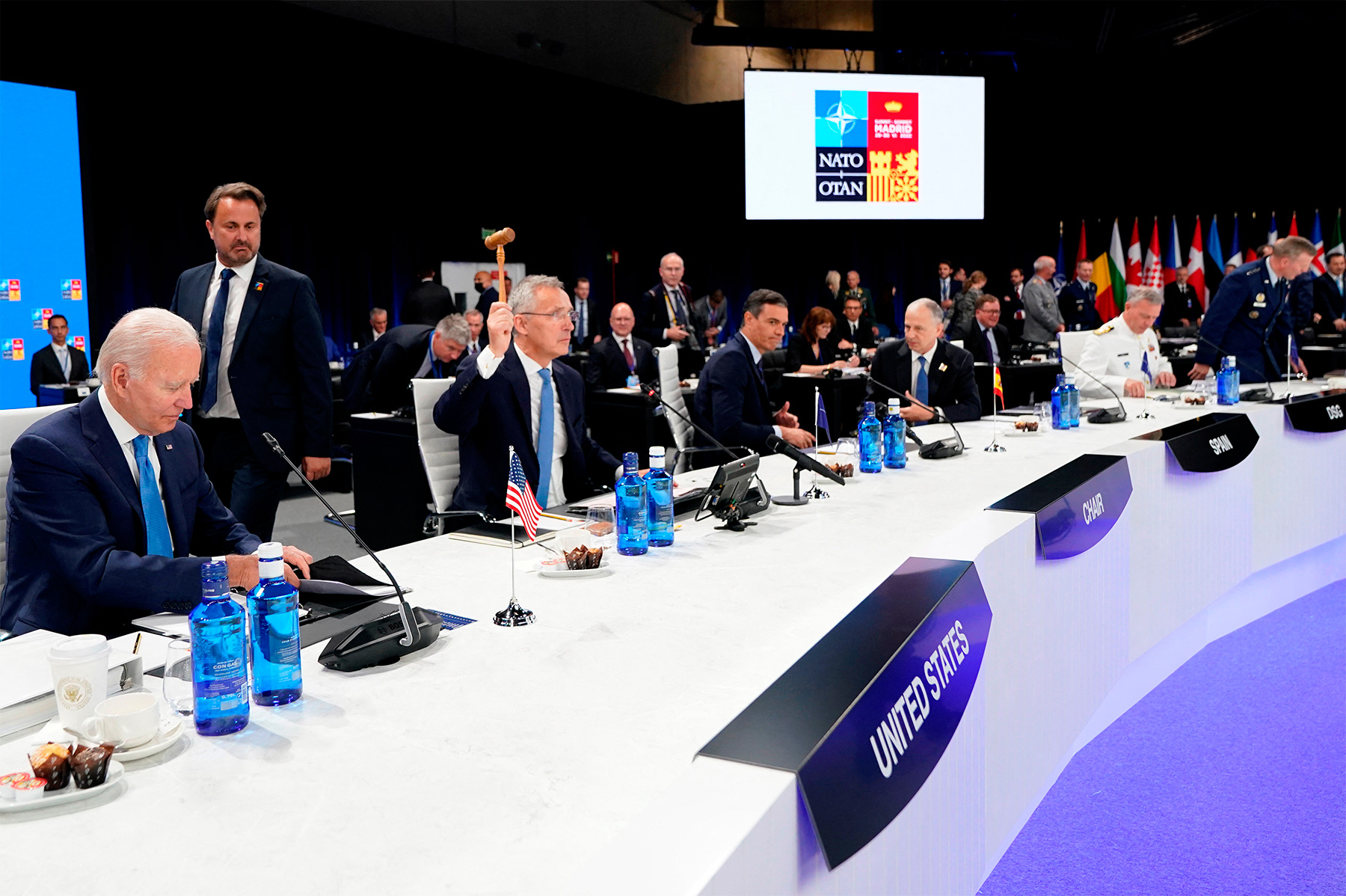January 27, 2023 will mark the 65th anniversary of the Lacy-Zarubin Agreement, one of the most significant treaties in the history of U.S.-Soviet relations. From 1958 to 1973, this first-of-its-kind agreement governed exchanges in science, culture, technology, and education between the two Cold War superpowers. Its conclusion, implementation and regular renegotiation occurred amid an extremely challenging international environment: the space race launched with the first satellite in 1957, the Cuban Missile Crisis of 1962, local confrontations between the two flagships of the bipolar system in various parts of the world. Among the resonant “memes” of that period, we can recall the “kitchen debate” of Nikita Khrushchev with Vice President Richard Nixon in 1959, the episode with the boot of the first secretary of the CPSU Central Committee, now overgrown with myths, and a lot more. Nevertheless, against this far from rosy background, cultural and scientific dialogue of the antagonist powers not only continued—it received a new impetus and acquired institutional dimensions.
Two of the document’s fourteen sections highlighted scholarly visits and academic mobility, respectively. On the Soviet side, the Academy of Sciences, the Ministry of Agriculture, and the Ministry of Health were to be the operators of such trips; on the American side, this was the National Academy of Sciences. The duration of the trips (from two weeks to one year), the number of delegates (for example, 3–4 medical scientists) and even geography (Moscow, Leningrad, Kiev in the USSR), were indicated. Similarly, the number of professors, teachers, and students called to participate in the academic exchange programs between Moscow State University and Columbia University, as well as between Leningrad State University and Harvard University in the 1958–1959 and 1959–1960 academic years, was specified.
In our opinion, this document was quite different from the subsequent generations of agreements. Despite being a framework covenant, it contained clear targets and specific names in certain related passages. After all, it is one thing when “the parties intend to develop something in the spirit of...” (followed by charming and florid diplomatic formulae), and quite another thing would be to specify the numbers. Academics, not only protagonists of exact and natural sciences, but others as well, understand the latter a lot better.
Overall, during the first year and a half of the Lacy-Zarubin Agreement in action, 124 bilateral projects in the fields of theoretical and molecular physics, inorganic chemistry, gastroenterology, veterinary medicine, pharmacology, vaccinology, Arctic studies, and other realms were implemented. By the time the Fulbright Report was published, 31 other projects had been agreed upon and initiated. On many of them, the names of specific participants and executors can be found in the text of the report.
What does this tell us? Without further ado, the Lacy-Zarubin Agreement really worked—not just on paper or in bureaucratic corridors, but in reality, that is, at university departments, laboratories, symposium and conference sidelines. Isn’t it a model to follow!
To exist in the Era of Deeds and to stay elevated, alert
ain’t so easy, alas....
Joseph Brodsky, 1969
The echo of a Beautiful Era
January 27, 2023 will mark the 65th anniversary of the Lacy-Zarubin Agreement, one of the most significant treaties in the history of U.S.-Soviet relations. From 1958 to 1973, this first-of-its-kind agreement governed exchanges in science, culture, technology, and education between the two Cold War superpowers. Its conclusion, implementation and regular renegotiation occurred amid an extremely challenging international environment: the space race launched with the first satellite in 1957, the Cuban Missile Crisis of 1962, local confrontations between the two flagships of the bipolar system in various parts of the world. Among the resonant “memes” of that period, we can recall the “kitchen debate” of Nikita Khrushchev with Vice President Richard Nixon in 1959, the episode with the boot of the first secretary of the CPSU Central Committee, now overgrown with myths, and a lot more. Nevertheless, against this far from rosy background, cultural and scientific dialogue of the antagonist powers not only continued—it received a new impetus and acquired institutional dimensions.
In today’s realities, this seems like borderline sci-fi. Parallels defy any of the known and relevant geometries. And there is no need to wait for a broad celebration of the anniversary, given the current amplitude of tension between Moscow and Washington. This is not 1988, when the USSR post office issued a commemorative stamp in honor of the 30th anniversary of the agreement, which by that time had already expired. They say, it was the wrong era. It is nevertheless a memorable date.
In light of that watershed, it is appropriate to recall the circumstances of the bilateral treaty and then try to answer the question of why it was possible in 1958, whereas in 2023, as things stand now (although there’s no harm in dreaming, to be sure), it appears unrealistic. Who knows, maybe the ghosts of science diplomats of the postwar era would suggest a way to remedy the situation?
Science diplomacy is about people
The final stage of negotiating the Lacy-Zarubin agreement commenced on October 28, 1957 and took three months. On the U.S. side, the senior official was William Sterling Lacy, East-West Exchange Advisor to U.S. Secretary of State John Dulles. On the Soviet side, this was Georgy Zarubin, Ambassador Extraordinary and Plenipotentiary of the USSR to the United States. Both chief negotiators, despite their abundant merits, cannot be counted among career diplomats.
Lacy entered this domain at the age of 36, with a background as an economist in various government agencies. After two trips abroad as the State Department commissioner (to Indonesia and the Philippines), in 1955 he was appointed as the U.S. Ambassador to the Republic of Korea. In Seoul, without going into detail, “something went wrong”, and the head of the diplomatic mission submitted seven months later his resignation to President Dwight Eisenhower, which was granted. Upon his return to Washington, Lacy, on the recommendation of the National Security Council and foreign ministers of the three victorious countries—the USSR, the United States, and Great Britain—was appointed special assistant to the head of the State Department, in charge of cultural relations with the Eastern Bloc.
The career milestones of the Soviet ambassador were as much non-trivial and non-linear. After graduating in 1918 from courses of accountants, Zarubin served six years in the Red Army. Demobilized after the Civil War, he graduated in 1931 from the textile department of the Industrial Academy and was appointed its principal in the same year. In 1935–1938, he headed the Chief Directorate of Educational Institutions under the People’s Commissariat for Light Industry, and from 1938 to 1940, he worked as the deputy general commissioner and chairman of the art council for the Soviet section of the World Exhibition in New York.
Having moved to responsible work in the People’s Commissariat for Foreign Affairs at the age of 40, Zarubin headed the Consular Department first (1940–1941), then the U.S. Department (1941–1944). This was followed by his appointment as Soviet Ambassador to Canada (1944–1946), to Great Britain (1946–1952) and, finally, to the United States (1952–1958).
Notably, when the agreement was signed on Jan. 27, 1958, Zarubin was no longer formally the head of the diplomatic mission in Washington: on January 4, he was promoted to the position of Deputy Foreign Minister, and on January 7, Mikhail Menshikov, another prominent state and party figure, former minister of foreign trade (1949–1951) and ex-ambassador to India (1951–1957), was named the new Ambassador of the Soviet Union to the United States. Arriving in the U.S. capital in late January and presenting his credentials on February 11, 1958, it was he who subsequently began working on putting the Agreement’s provisions into life. Yet, the document bears the signature of His Excellency Ambassador Zarubin.
His successor, Menshikov, did not come from the Gorchakov or even Chicherin “clan” either—rather, he was a strong economic executive, as they used to say. Prior to taking the above-mentioned positions, he had traveled a brilliant and typical career path, quite notable for this type of administrative bureaucrats. We should only add that he had served as Deputy Director of the United Nations Relief and Rehabilitation Administration (UNRRA) from 1943 to 1946, where he came across Lacy, who also worked there.
What’s the use of those dreary excerpts from personal files, one would think? It’s all about the personal factor that played no small part in reaching the agreement. To some extent, it was probably due to the physical proximity of the people who then took part in the negotiations that the agreement was signed. Not quite a “family affair”, but they settled all issues (in a good sense) like professional economists, who also had an impressive managerial experience in the spheres of culture, technology and education. In diplomacy, and especially in its scientific dimension, this is like winning half the battle.
Unfortunately, Zarubin never saw the results of the deal, as he suddenly died in November 1958. Menshikov was replaced as ambassador in 1962 by the legendary Anatoly Dobrynin, whose arrival ushered in a new phase of Soviet-American relations. Yet, the Lacy-Zarubin Agreement remained in force.
Science diplomacy is about the small picture
Now let’s look at what was spelled out in that agreement. There were quite a few provisions there: from intentions to develop tourism and establish direct air links between the countries to the tours of specific artists (Emil Gilels, Blanche Thebom, and others), supported by the famous music and theater producer Sol Hurok (Solomon Gurkov in his pre-immigrant past). Subsequently, that impresario was credited with the phrase that the cultural exchange between the USSR and the United States essentially boiled down to “them bringing their own Odessa residents to the U.S. for him to promote and him sending his own Odessa artists to the Soviet Union.” This shows once again the importance of outstanding personalities, let alone the performances of the Bolshoi Ballet Company and other distinguished teams on American stages, and, respectively, famous American artists on Soviet stages.
We are understandably more interested in scientific and academic exchanges. And here, too, the agreement was rather specific, albeit less so in comparison with the inter-state dialogue of muses.
Two of the document’s fourteen sections highlighted scholarly visits and academic mobility, respectively. On the Soviet side, the Academy of Sciences, the Ministry of Agriculture, and the Ministry of Health were to be the operators of such trips; on the American side, this was the National Academy of Sciences. The duration of the trips (from two weeks to one year), the number of delegates (for example, 3–4 medical scientists) and even geography (Moscow, Leningrad, Kiev in the USSR), were indicated. Similarly, the number of professors, teachers, and students called to participate in the academic exchange programs between Moscow State University and Columbia University, as well as between Leningrad State University and Harvard University in the 1958–1959 and 1959–1960 academic years, was specified.
In our opinion, this document was quite different from the subsequent generations of agreements. Despite being a framework covenant, it contained clear targets and specific names in certain related passages. After all, it is one thing when “the parties intend to develop something in the spirit of...” (followed by charming and florid diplomatic formulae), and quite another thing would be to specify the numbers. Academics, not only protagonists of exact and natural sciences, but others as well, understand the latter a lot better.
The same can be said about the August 1959 Report of the U.S. Senate Committee on International Relations [1]. At that time the Committee was headed by James Fulbright, the very man who in 1946 initiated the famous and still functioning exchange and grant program. However, U.S.-Soviet collaboration within this program began a decade and a half later, whereas the 1959 Fulbright Report contained detailed quantitative data and qualitative assessments of the implementation of the Lacy-Zarubin Agreement.
Not to overload the reader with statistics, we give just a few figures. By the summer of 1959, about 75% of the projects identified in the agreement had been fully completed, and 90% were at various stages of realization. During the first year, 58 U.S. scientists, university professors, and students visited the USSR, and 54 of their Soviet counterparts visited the United States. In the first half of 1959, there was also a steady positive trend, and already with a preponderance in favor of Soviet specialists: 24 domestic delegates vs. 19 U.S. participants in science and technology exchange programs.
Overall, during the first year and a half of the Lacy-Zarubin Agreement in action, 124 bilateral projects in the fields of theoretical and molecular physics, inorganic chemistry, gastroenterology, veterinary medicine, pharmacology, vaccinology, Arctic studies, and other realms were implemented. By the time the Fulbright Report was published, 31 other projects had been agreed upon and initiated. On many of them, the names of specific participants and executors can be found in the text of the report.
What does this tell us? Without further ado, the Lacy-Zarubin Agreement really worked—not just on paper or in bureaucratic corridors, but in reality, that is, at university departments, laboratories, symposium and conference sidelines. Isn’t it a model to follow!
“For the last line, hey-ho, no feather to pluck from the bird...”
Summing up the analysis, we’ll allow ourselves to define the following criterion for the success of most scientific and diplomatic processes. Their effective course requires (but surely not limited to) professionalism of the participants together with clarity, objectivity in terms of goal-setting, means and ways to achieve the goals outlined. “Trivial,” the reader may note. “Vital,” the historian and practitioner may answer back. The agreements do not necessarily have to be signed by top executives or world-renowned scientists. Let’s face it: outside the narrow circle of foreign policy commentators, neither Lacy nor Zarubin were widely known, either during their lifetime or posthumously. But, as the biographies of these fully “scientific diplomats” reveal, they were high-class professionals. We’ve already mentioned the reasons why specific and nerdy documents (say, road maps) are better implemented than the kindest and loftiest framework memoranda (as beautiful as they are amorphous). A review of the Lacy-Zarubin case may serve as just another evidence. Happy anniversary, fellow scientists! Take care.
This study was financed from the grant of the Russian Science Foundation (project No. 18-78-10123-P); https://rscf.ru/project/18-78-10123/; https://rscf.ru/project/21-78-03019/
1. United States Exchange Programs with the Soviet Union, Poland, Czechoslovakia, Rumania and Hungary. Committee on Foreign Relations. United States Senate. August 20, 1959. Washington: Government Printing Office, 1959. — 57 p.







